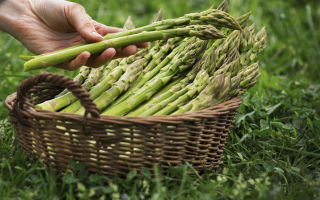Content
- 1 What does asparagus look like
- 2 Asparagus species
- 3 The chemical composition and calorie content of asparagus
- 4 Useful properties of asparagus
- 5 Is it possible to use asparagus during pregnancy and breastfeeding
- 6 At what age can asparagus be given to children
- 7 Is asparagus good for diabetes
- 8 Asparagus-based traditional medicine recipes
- 9 The use of asparagus in home cosmetology
- 10 The benefits and harms of pickled asparagus
- 11 Recommendations for use
- 12 Delicious and healthy asparagus recipes
- 13 Harm of asparagus and contraindications for use
- 14 How to choose and store asparagus
- 15 Conclusion
The benefits and harms of asparagus are a question asked by lovers of delicious and healthy food. The plant is used in many dishes, has not only culinary but also medicinal value. The beneficial properties of asparagus make it a valuable product in any refrigerator.
What does asparagus look like
Asparagus is a plant with a dense stem, sometimes up to 160 cm in height, and numerous green leaves that look like coniferous needles. Gastronomic and medicinal value in the plant is represented by thick spear-shaped shoots extending from the main trunk, more precisely, their upper part.
It is customary to eat only young shoots, they are harvested from spring to early summer. The plant is considered a delicacy and can be quite expensive.
Asparagus species
The plant has several dozen varieties, but only 3 of them are mainly found on the shelves of stores and markets. Each species has its own unique history and characteristics.
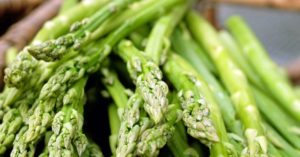
Green asparagus
Green asparagus is the most common variety. It was first eaten in the Mediterranean and on the Caspian Sea coast many centuries ago, and for a long time it was considered a simple product with no particular gastronomic value. However, studies have shown that the benefits of green asparagus are very great - due to the balanced content of vitamins in the composition, it can be considered a medicinal plant.
White asparagus
Asparagus with white stems has long been considered a delicacy and still remains so. The unusual appearance of the plant is explained by the fact that it is grown in a special way, densely spudding with nutritious loose soil. The stems receive a minimum of sunlight, therefore they do not acquire a green tint. Growing a white variety is quite difficult, but the result is worth the effort - the benefits of white asparagus are higher than that of other varieties, since there are more nutrients in it.

Purple asparagus
The most unusual plant is with deep purple stems. The shade is also explained by the peculiarities of care - the purple variety is grown in the dark, only occasionally arranging short "sunbathing" for the sprouts. As a result, plant cells produce a special pigment that gives the leaves and stems a bright, dark color. True, when exposed to heat, the stems of the plant still turn green, so the prepared purple variety is not much different in appearance from others.
Color isn't the only distinguishing characteristic of the purple plant. It also has an original bitter taste.
The chemical composition and calorie content of asparagus
The nutritional value of the plant is due to its rich elemental composition. The stems and leaves in large quantities contain:
- organic acids and starch;
- monosaccharides and disaccharides;
- ash and fiber;
- iron, sodium, calcium and magnesium;
- phosphorus;
- a large amount of water;
- vitamins K and PP;
- tocopherol and thiamine;
- riboflavin and retinol;
- vitamin C;
- folic acid;
- pyridoxine;
- niacin.
Two substances in its composition give particular value to asparagus - coumarin and saponin. They have an extremely beneficial effect on the hormonal background and the human cardiovascular system.
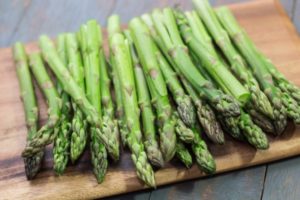
As for the calorie content, the plant can be considered extremely dietary. 100 g of this product contains only up to 30 kcal, so green, white or purple stems are appropriate in any diet.
Useful properties of asparagus
Valuable vitamins and mineral components that make up the plant give it a lot of properties beneficial to the body. Asparagus:
- helps maintain normal blood pressure;
- has a blood-thinning effect;
- normalizes heart rate and prevents heart attacks;
- strengthens vascular walls and prevents the development of strokes;
- lowers blood glucose levels;
- cleanses the body of toxins, excess salts and toxins - this is the benefits of asparagus for the liver;
- has a rejuvenating effect on cells;
- helps the kidneys and eliminates edema, protects against the formation of kidney stones;
- improves the functioning of the intestines and stomach, speeds up the metabolism;
- raises immunity and protects the body from the development of cancerous tumors;
- has a beneficial effect on vision;
- has a positive effect on the nervous system and brain activity.

For adult men and women
The substances contained in the plant protect the human body from the development of anemia. The benefits of asparagus for a woman's health are that the product helps to maintain good health during menstruation and during menopause, replenishes the supply of useful elements, maintains vigor and good mood.
The benefits of asparagus for a woman's body is also that the plant takes care of female beauty. Asparagus has a positive effect on the condition of the skin and hair, allows you to maintain youth and natural beauty longer. And of course, the plant promotes easy weight loss, since it contains very few calories.
The benefits and harms of asparagus for men's health are expressed in the beneficial effects of the plant on the cardiovascular system. With regular consumption of the plant, men are less at risk of developing serious heart ailments in adulthood. The product strengthens endurance and gives strength, and also helps with inflammation of the prostate gland.
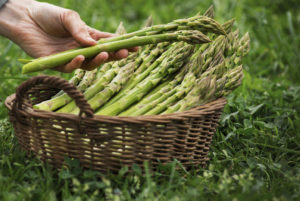
For seniors
Mineral elements and organic acids in the plant are especially useful in old age. A vegetable delicacy in the diet of the elderly serves as the prevention of joint ailments, protects against the development of cataracts and glaucoma. Elderly people often suffer from heart ailments and pressure surges, and asparagus strengthens blood vessels and helps with hypertension, tachycardia and other heart rhythm disorders.
Slimming
A low-calorie plant can be found in many diets, its properties are of great benefit to the body, and it is almost impossible to gain excess weight when consumed. During the diet, the plant can be added fresh and processed to almost all dishes, if at the same time the usual portions are reduced, the product will contribute to weight loss.
Also, the plant acts as a mild natural laxative due to its high fiber content. When the product is consumed, toxins and toxins quickly leave the body, and this contributes to weight loss.
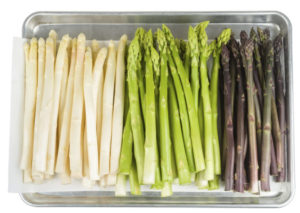
Is it possible to use asparagus during pregnancy and breastfeeding
During the gestation period, the plant is highly recommended for consumption. It contains a lot of folic acid, and this substance is very important for the normal development of the fetus. The product also has a very beneficial effect on the well-being of the expectant mother, it will help to cope with the feeling of fatigue, insomnia and irritability.
Asparagus is not prohibited for a nursing mother - but it should be used with great care. With all the benefits, the properties of the plant can cause allergies in infants, as well as provoke flatulence and colic, which will certainly be harmful. In addition, breast milk may taste unpleasant when the product is consumed, and then problems with feeding will appear.
If a young mother really wants to introduce a plant into the diet, then this should be done in small dosages and no more than 1 time per week. In this case, preference should be given to a well-boiled product.
At what age can asparagus be given to children
Useful properties of the product will have a beneficial effect on the developing child's body. But the plant can also cause harm - many children are allergic to this product, and besides, it is not always easily absorbed by the intestines. For the first time, a child can only be offered a product after reaching 2 years of age, and it must be carefully boiled or steamed.
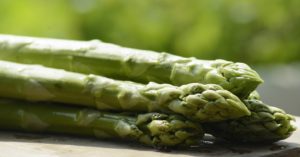
Is asparagus good for diabetes
The plant contains a huge amount of vitamins and valuable minerals, and the calorie content is very low. The glycemic index is only 15 units, the use of the product does not have a negative effect on blood sugar levels.
Thus, using a plant for diabetes is not only possible, but also necessary. It frees the intestines from harmful substances and cleanses the blood, helps the kidneys, liver and heart, and prevents the development of obesity. If the plant is present in a regular diet, then the risk of developing dangerous complications of diabetes becomes much less.
Asparagus-based traditional medicine recipes
Mostly a vegetable delicacy can be found in recipes. However, the health benefits of asparagus are used to target certain ailments.
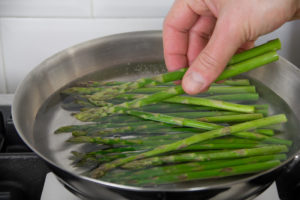
Diuretic
The plant contains quite a lot of aspartic acid, which has a diuretic effect. Dietary fibers of a plant have a beneficial effect not only on peristalsis, but also on metabolic processes in general. Therefore, in case of kidney problems and frequent edema, the properties of the product will be very useful.
A diuretic is prepared as follows: 60 g of the product is poured with a liter of boiling water, kept in a water bath for a quarter of an hour, and then insisted for another 45 minutes. Filter the finished broth and drink in the amount of 1 large spoon three times a day.
Infusion for inflammation of the gallbladder
The healing properties of asparagus effectively fight inflammation. With inflammation in the gallbladder, it is necessary:
- take 1 teaspoon of crushed shoots, leaves and plant roots;
- mix the parts together;
- pour boiling water over and leave for 2 hours.
The filtered infusion is drunk in 2 teaspoons throughout the day every couple of hours.
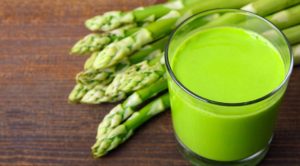
Infusion to enhance potency
A beneficial herbal remedy can help reduce male libido. A stimulating drug is prepared as follows: the dried root of the plant is ground into a fine powder, then poured with boiling water and infused for several hours. You need to drink the infusion several sips three times a day.
The use of asparagus in home cosmetology
The beneficial properties of asparagus for women are manifested, among other things, with external application of the product. The plant helps to improve skin condition, has a rejuvenating and tightening effect.
Infusion for getting rid of cellulite
In the fight against the “orange peel” on problem areas of the body, not only massage procedures and expensive creams will help. Asparagus will be of great benefit. A finely chopped plant in the amount of 1.5 teaspoons should be poured with boiling water, boiled for 5 minutes, and then allowed to brew for another couple of hours.
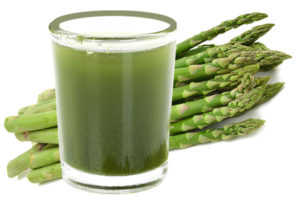
The filtered infusion is taken four times a day, half a glass. The remedy from the plant accelerates metabolic processes in the body and promotes the breakdown of fats, therefore it is suitable for both getting rid of cellulite and for its prevention.
Rejuvenating face mask
In order to refresh the skin of the face, eliminate irritations and remove fine wrinkles, you can use the following mask:
- chopped plant in the amount of 2 large spoons is mixed with 2 large spoons of cream;
- the same amount of natural cottage cheese is added to the mixture;
- Stir the mask well and apply to clean skin for 10 minutes.
With a weekly application, after just a few procedures, the skin will become noticeably fresher, softer and younger.
Mask for age spots
The plant is capable of providing a slight whitening effect. To get rid of pigmentation and freckles, mix 1 large spoonful of chopped asparagus with the same amount of low-fat sour cream and add a teaspoon of carrot juice.
The mask is applied to the face and kept for a quarter of an hour. It is recommended to wash off the product not with water, but with warm tea leaves, after the procedure, the skin can be wiped with an ice cube.
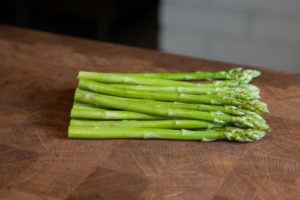
The benefits and harms of pickled asparagus
Since the plant belongs to the category of seasonal products and has a short shelf life, it is customary to preserve it for the winter. Pickled asparagus, found in many stores, is a healthy product that retains the maximum value. The composition still contains vitamins B and PP, minerals calcium, magnesium, phosphorus and sodium, and the calorie content is only about 15 kcal per 100 g.
The pickled plant is often used in salads. It is useful to use it on a diet and with a tendency to vascular and heart ailments.
However, the health benefits and harms of pickled asparagus can be controversial for people with joint diseases. It is necessary to use the product with caution in case of ailments of the stomach and intestines, canned asparagus in large quantities can be harmful.
Recommendations for use
You can use asparagus in food both raw and processed. The benefits and harms of raw asparagus are that the plant retains all its properties in full in the absence of heat treatment. But, of course, you should not overuse raw stems, otherwise they will harm and lead to an upset stomach.

- It is best to steam asparagus - vitamins and minerals are lost to a minimum. At the same time, cooking asparagus should not last long, you just need to soften it slightly, and then serve as a side dish.
- The benefits of boiled asparagus will be greatest if the stems are as fresh as possible. It is best to cook asparagus immediately after purchase.
- If the leaves and stems of the plant have wilted a little, for several hours the product can be put in clean cool water with added sugar - in the nutrient solution the asparagus will "come to life".
It is customary to cut the long stems of the plant before cooking. This is done in the following way: the asparagus shoot is taken by the tips, bent in the middle and cut off where it naturally broke.The rest of the plant must be peeled from the skin before being processed or consumed raw.

Delicious and healthy asparagus recipes
There are dozens of recipes that feature asparagus in one way or another. For example, the health benefits of asparagus salads are commonly known when combined with any vegetables and fruit pieces. But only some of them are especially popular.
Asparagus stewed in oil
A nutritious and healthy meal can be obtained by stewing fresh asparagus in quality butter. The recipe looks like this:
- heat the pan, pour 1 large spoonful of olive oil and the same amount of butter on it;
- a pinch of salt and half a large spoonful of sugar are added to the melted butter;
- put a couple of bunches of cut fresh asparagus in a frying pan and mix;
- the plant is fried over medium heat until a golden hue appears;
- half a glass of water is poured into the pan and covered with a lid.
After that, stew the asparagus for another 4 minutes over low heat, then remove the lid and add the temperature. After all the moisture and asparagus juice have evaporated from the bottom of the pan with constant stirring, the dish can be removed from the stove and served.

Baked asparagus
A tasty and healthy dish can be obtained by baking the product in the oven. The recipe is extremely simple: spread the asparagus on a baking sheet greased with olive oil, sprinkle with grated garlic and salt to taste, pour olive oil on top. Then the baking sheet is removed into an oven preheated to 220 ° C and removed after 10-15 minutes.
All ingredients for baked asparagus must be taken by eye. The cooking time is also determined individually: if the shoots of the plant are thin, they will be ready in 7 minutes, the dense asparagus will have to be kept in the oven longer.
Asparagus puree soup
To make a nutritious, delicious soup, you must:
- chop a few fresh green asparagus shoots, after cutting off the lower parts;
- chop 1 onion in large pieces;
- Put asparagus and onions in a frying pan, heated and oiled with olive oil, sprinkle with garlic and fry until golden brown.
After that, lightly fried vegetables should be put in a saucepan, poured with fresh chicken broth, put on fire and cook for a quarter of an hour after boiling. Then add a glass of milk to the pan, add a little salt and pepper, wait again for the soup to boil, and boil it for another 3 minutes.
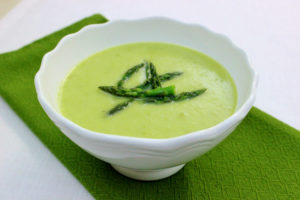
The finished soup is poured into a blender and the ingredients are chopped until puree, and then poured into plates.
Harm of asparagus and contraindications for use
The beneficial properties of asparagus in nutrition can be harmful for certain diseases. It is forbidden to use the plant in any form:
- with acute gastric or duodenal ulcer;
- with pancreatitis and colitis in a state of exacerbation;
- with rheumatism;
- with cystitis and prostatitis.
In addition, asparagus, like any food, can cause allergies and thus be harmful. It is recommended to try it for the first time in small dosages.
How to choose and store asparagus
When buying asparagus, you need to pay attention, first of all, to the season. The most delicious sprouts are sold in stores at the end of April and May, when they naturally ripen. Later asparagus is also edible, but less healthy and tastes less sweet.
When choosing a product, you need to pay attention to its appearance. Smooth asparagus of medium thickness has the best taste, it is very good if all shoots in a bunch have approximately the same length and diameter.
As for storage, it is necessary to keep the product in the refrigerator - asparagus quickly deteriorates at room temperature.The shelf life of the plant is only 3 days, after this time the asparagus will lose its taste and benefits.
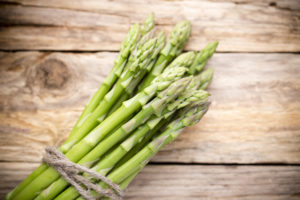
Conclusion
The benefits and harms of asparagus depend on individual health conditions. In the absence of strict contraindications, white, purple and green sprouts will have a beneficial effect on the body and relieve the symptoms of certain diseases.

